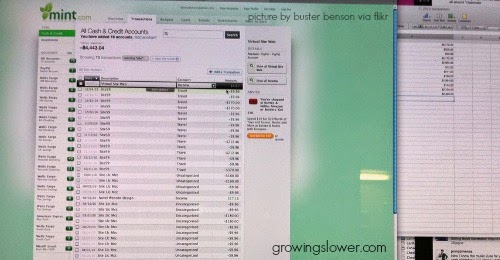The envelope system is great for staying on budget, but what do you do when you still want to responsibly use debit cards or a mix of debit and cash for some of your expenses? The answer is a digital envelope system, and I’ll show you step by step how to set it up.
Here’s where I stand on the envelope budget system: Use one. Either digital or on paper. Some form of envelope system is essential to a household staying accountable for where your money goes. It is the ONLY way to stay on budget.
The Cash Envelope System
A lot of debt free frugal people promote the cash envelope system. Basically, you go to the bank (weird, I know), take out cash (remember those little green pieces of paper?), and distribute it into envelopes representing each budget category.
You carry these around and use them to pay for expenses like groceries, clothing, gas, and entertainment throughout the month.
The obvious drawbacks are that you could be carrying around a sizable amount of cash at any given time, and not everyone is comfortable with that. It also takes some coordination as to which spouse has which envelope at any given time.
The advantage is that if you run out of cash, you cannot buy anything else. It makes it really hard to go over budget.
Studies have also shown that people who use cash tend to spend less than those that use a debit or credit card. There’s just something more painful about seeing those dollars leave your hand.
Digital Envelope System
Luckily, there are a couple of completely free and awesome digital “envelope” systems that work very well if you’re not ready to part with your debit card just yet.
Please note, I’m not saying you should continue to use credit cards. Do the Dave and cut those babies up! If you want to take control of your finances (and I really hope you do) you need to break the cycle of relying on consumer debt.
However, there are a couple of reasons we’ve decided to stick with using plastic on a day to day basis instead of a 100% cash system.
1. Tracking Expenses
Knowing where your money going on a daily or weekly basis is essential to staying on budget. If you only look at your spending at the end of the month, by then it will be too late to change the course of your spending. You’ll already be over budget!
For us, using a digital envelope system makes it easy to consistently track our expenses. (We personally use mint.com) If my husband forgets to bring home a receipt, no big deal, it’s already automatically logged on our Mint account before he gets home.
For some of us, the automatic nature of a budgeting app can work better than paper or a spreadsheet.

2. Full Financial Picture
We also like using plastic with a digital envelope system because it allows us to add all of our accounts to get a full (and automated) financial picture. With Mint or Mvelopes, you can see your transactions and balances for debit cards, checking, savings, loans, even paypal the moment they happen.
You can log into one account and see everything that’s going on with your money. I don’t know about you, but at this point in life, I need things to be extra stupid easy or I’m not going to deal with it. If I had to log into every one of those individual accounts, find the log in names and passwords, probably type it in wrong twice, it’s just not going to happen.
I’m all about keeping it simple, and the digital envelope deal is simple. Once you get your account set up, every transaction is automatically categorized. (You can change it if the software guesses wrong, and it learns your preferences over time. You can also split transactions into different categories if necessary.)
You can enter all your budget categories and amounts. It shows you exactly how much you’ve spent and how much you have left in each category. The little bar turns green when you’re on budget, yellow when you’re about to meet your budget, and red if you go over. My two year old could understand it, which let’s be honest, is about the mental capacity I’m operating at some days. Mommy brain!
3. Alert, Alert!
There are about a million different alerts you can have sent to your email, text, or mobile device to update you on your financial situation and alert you if there is any unusual (aka irresponsible) spending or if you are about to go over budget.
This is a great fail-safe to keep you on track with your budget. Like a hungry toddler, your finances will not allow you to ignore them for long. Sure you can choose to over-spend anyway, but you will no longer be doing so in blissful ignorance.

Start Today
That’s about it. If you are sick of going over budget every single month. You need to get started on some kind of envelope system. Put the kids in front of the TV (oh ya I just said that!), sit down with your spouse for half an hour, and get started today. Do not let another month go by without taking control of your budget!
Photo credits: cash envelope, kid watching tv, mint screen, cut credit, piggy bank
